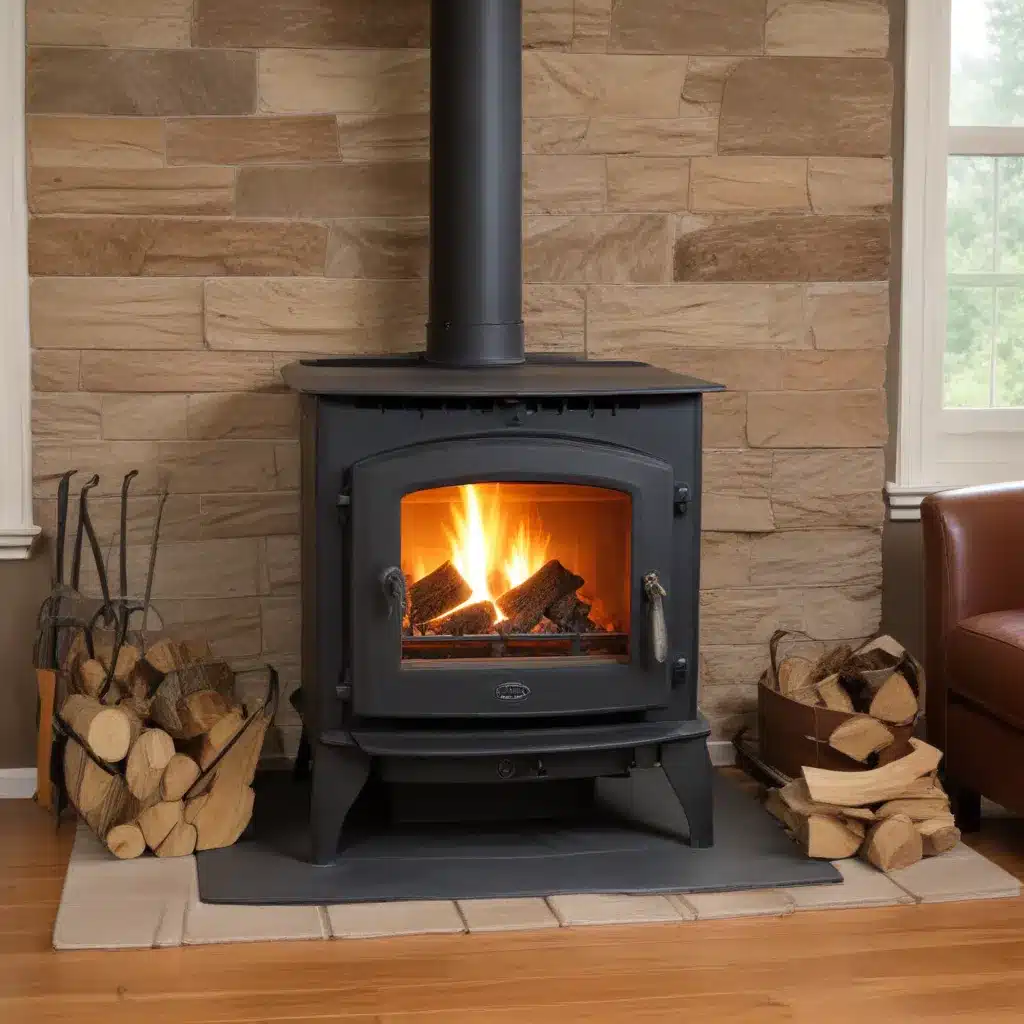
The Evolving Landscape of Clean Wood Heating
As the demand for sustainable and affordable heating solutions continues to grow, the wood stove industry is undergoing a significant transformation. Driven by increasingly stringent emission regulations and a desire for greater energy efficiency, manufacturers and researchers are exploring advanced combustion technologies that can significantly reduce wood stove emissions while maintaining the affordability and renewable nature of this heating method.
Innovative Approaches to Cleaner Wood Stoves
Sensor-Driven Emission Monitoring
One of the key challenges in wood stove design and testing has been the ability to accurately measure and monitor emissions, especially during real-world use in homes. Traditional certification methods using EPA dilution tunnels and gravimetric sampling provide time-averaged results, but struggle to capture the full range of emission profiles and high-emission events.
To address this, a collaborative project between the Hearth, Patio & Barbecue Association and Lawrence Berkeley National Laboratory is evaluating the use of real-time particulate matter (PM) sensors to provide a more comprehensive picture of wood stove emissions, both in the lab and in-situ. By identifying and validating suitable PM monitoring technologies, this research aims to enable manufacturers and regulators to better understand and optimize wood stove performance under diverse operating conditions.
Draft Prediction and Optimization
Another significant factor influencing wood stove emissions and efficiency is the draft, or the flow of air through the stove and chimney system. Stoves are typically designed and tested for a single-story venting system in a controlled laboratory environment, but their performance can vary greatly when installed in real homes with different chimney configurations and ambient conditions.
To address this, the Hearth, Patio & Barbecue Association and Lawrence Berkeley National Laboratory are collaborating to develop a draft prediction tool that can guide manufacturers and installers in adjusting stove or chimney parameters to ensure optimal emissions and performance, even in less-than-ideal draft conditions.
Thermal Storage Solutions
One of the inherent challenges with wood stoves is their batch-loading nature, which can result in room overheating and poor combustion during certain phases of the burn cycle. A project led by Woodstove Latent Heat Transfer Design is exploring the integration of cutting-edge thermal storage units to provide a constant, steady release of heat over extended periods, maximizing energy efficiency and reducing emissions.
By incorporating these advanced thermal storage solutions, wood stove users can enjoy a more controlled and comfortable heat output, while consuming less fuel and generating fewer emissions. This technology has the potential to make high-efficiency wood heating more accessible and affordable for a wider range of households.
Electrostatic Precipitators for Emission Reduction
In addition to innovations within the wood stove itself, researchers are also exploring the use of retrofitted emission control technologies to reduce particulate matter from existing residential wood heaters. One such approach is the integration of electrostatic precipitators (ESPs) as a retrofit device.
ESPs have demonstrated high efficiency in removing fine particulate matter, particularly in the PM2.5 size range, across various residential wood heaters. A project led by a team in Bonney Lake, Washington, aims to test and analyze the effectiveness of ESP technology, with the goal of developing a robust body of work to give early adopters confidence in the efficacy of this retrofit solution. The results of this research could also lead to the establishment of a national emission testing protocol for ESPs, which could be recognized by the EPA and applied to all testing institutes in the US.
Integrating Opacity Sensors for Intelligent Air Supply Control
Another innovative approach to managing wood and pellet heater emissions is the use of advanced light opacity technology to measure smoke emissions and inform the user or the stove control system. A project led by Smokeless Chimney, in partnership with Lawrence Berkeley National Lab, is exploring this novel concept, which aims to identify the root causes of smoke and provide real-time feedback to transform every flame into a beacon of cleaner air.
By incorporating this opacity-sensing technology, wood stove users can receive instant feedback on their combustion efficiency and make adjustments to the air supply, leading to a more sustainable and eco-friendly heating experience.
The Wood Heater Innovation Collaboration: Accelerating Clean Wood Heating
The advancements in wood stove technology highlighted in this article are the result of the ongoing efforts of the Wood Heater Innovation Collaboration (WHIC), a BETO-funded consortium of National Laboratories (BNL and LBNL) dedicated to accelerating clean wood heater technologies and improving air quality.
Through the WHIC, U.S. wood heater manufacturers and researchers can leverage the unique expertise and capabilities of the partner laboratories to advance or accelerate the commercial readiness of their innovative technologies. This collaborative approach aims to enable the wood heating industry to develop the next generation of efficient and clean wood heaters, ensuring that this renewable energy option remains a viable and sustainable choice for homeowners.
Conclusion: A Cleaner, More Efficient Future for Wood Heating
As the wood stove industry continues to evolve, the advancements in combustion technologies, emission monitoring, and integrated control systems highlighted in this article hold the promise of a cleaner, more efficient future for residential wood heating. By leveraging cutting-edge research and development, manufacturers can create wood stoves that not only meet stringent emission regulations but also provide a more comfortable, cost-effective, and environmentally friendly heating solution for homeowners.
Through the collaborative efforts of organizations like the Wood Heater Innovation Collaboration, the wood stove industry is poised to make significant strides in reducing the environmental impact of this renewable heating method, while ensuring its continued viability and accessibility for households across the country. As we look towards a more sustainable future, these innovative wood stove technologies will play a crucial role in shaping the landscape of residential heating and contributing to cleaner air and a healthier planet.


